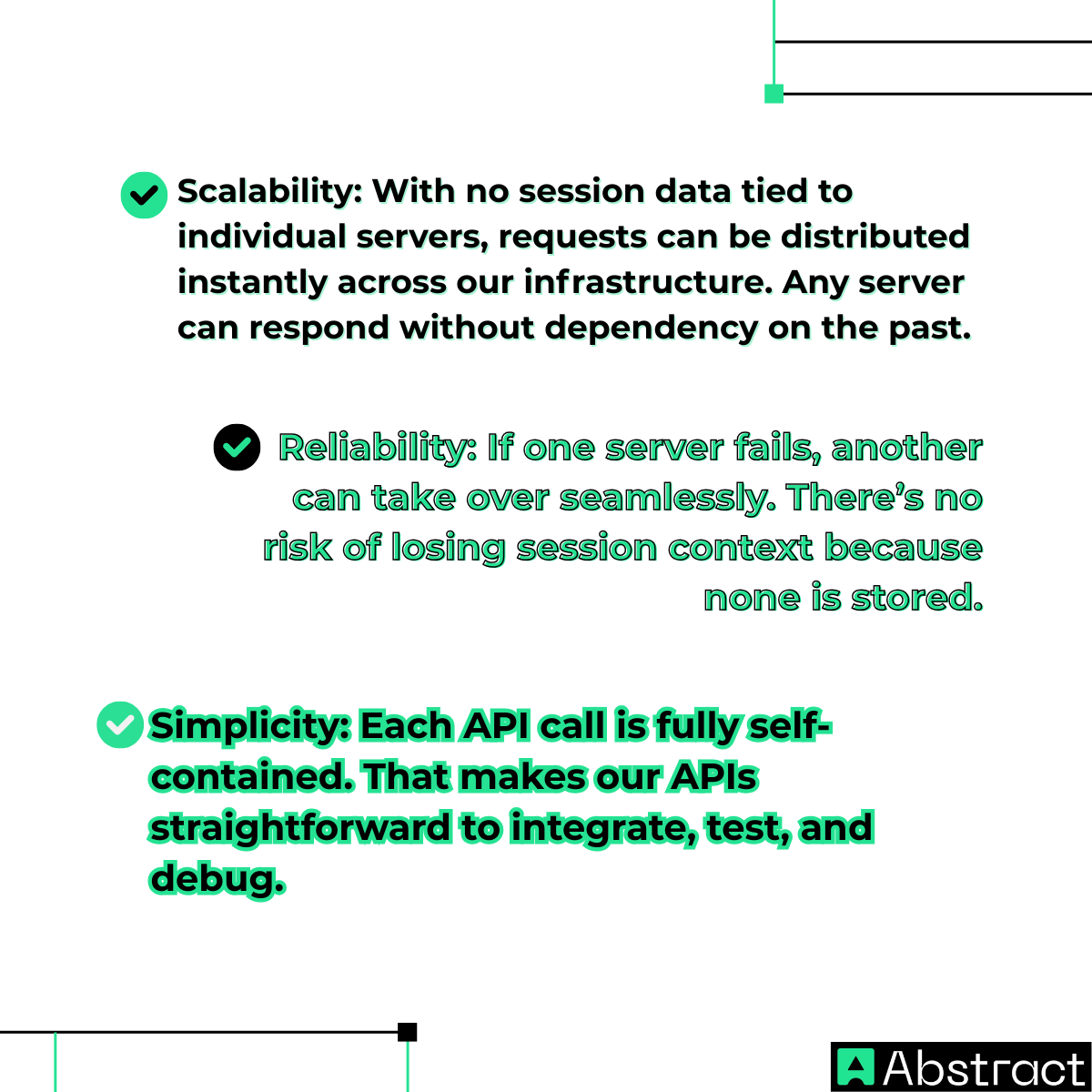What is the difference between stateful and stateless?
Think of it in terms of everyday conversations:
- Stateful is like chatting with a close friend. You can say, “Let’s go to that place again”, and they’ll instantly know which café you’re talking about because they remember your last conversation. Similarly, a stateful server stores session data, remembering your previous interactions.
- Stateless is more like buying from a vending machine. Each time you interact, you must insert coins and make a full selection from scratch. The machine never recalls your previous snack choices. Likewise, a stateless server treats each request as an entirely new transaction, without retaining any context.
Formal definitions:
- Stateful systems: Servers maintain the client’s state across multiple requests. Context is stored either in memory or in a database, making the server aware of ongoing sessions.
- Stateless systems: Servers do not preserve any client context between requests. Every request must contain all the information required for processing.
Key Questions Answered
Is HTTP stateless or stateful?
HTTP is inherently stateless. Each request is handled independently, with no memory of the one that came before.
However, we often layer stateful experiences on top of HTTP using mechanisms like:
- Cookies 🥠: small files stored in the browser that let the server recognize users.
- Sessions: identifiers stored server-side that help track logged-in users.
- Tokens: authentication credentials included in every request.
Without these, every request would be like meeting someone who forgets your name immediately after shaking your hand.
Is API stateless or stateful?
It depends on the API design, but modern REST APIs are built to be stateless.
Each request must carry everything the server needs to process it—authentication keys, parameters, and instructions. This principle makes REST APIs more scalable, because any server in the cluster can handle a request without needing prior context.
- Example: An API call for weather data includes your API key and the requested city in every request. The server doesn’t “remember” that you previously asked about another city.
Is stateful or stateless better?
Neither model is universally superior—it all depends on the use case.
Is Azure stateful or stateless?
Microsoft Azure is a cloud platform, not a single application, so it supports both models.
- Stateless examples: Running a serverless function with Azure Functions or hosting a stateless web app in Azure App Service.
- Stateful examples: Using Azure Service Fabric with persistent storage, or running a traditional database-backed VM that tracks session data.
This flexibility shows why modern platforms accommodate both styles—because different workloads require different approaches.
The AbstractAPI Philosophy: Built for a Stateless World
At AbstractAPI, every REST API we deliver is intentionally stateless. This design decision isn’t accidental—it’s what enables us to deliver performance, resilience, and reliability at scale.

This stateless design is what allows AbstractAPI to support millions of requests every day without interruptions. ⚡
Conclusion
Grasping the stateful vs. stateless distinction is essential for developers, architects, and system designers. Stateful systems shine in situations where ongoing context is required, but stateless systems have become the backbone of modern web applications, enabling scalable, fault-tolerant, and globally distributed services.
The choice you make will directly impact how your application scales and how resilient it is under stress.
📌 Next step: Dive into the AbstractAPI documentation and experience stateless architecture in action—fast, predictable, and ready for growth.




